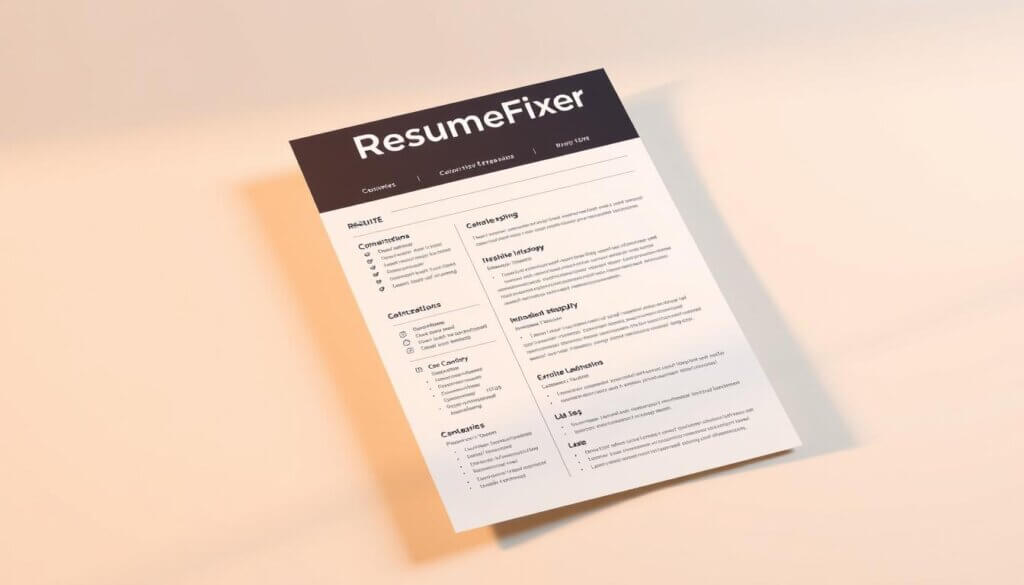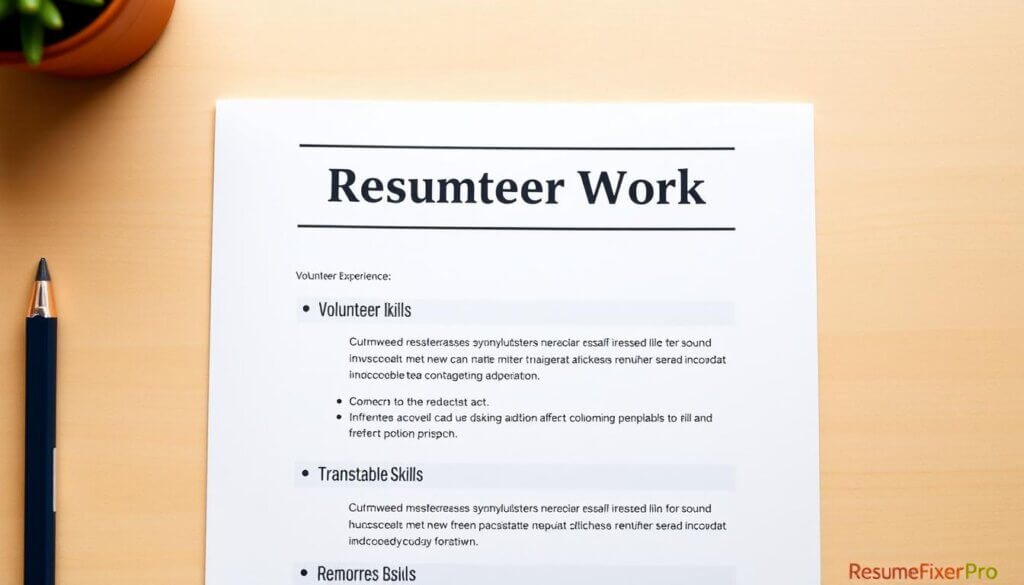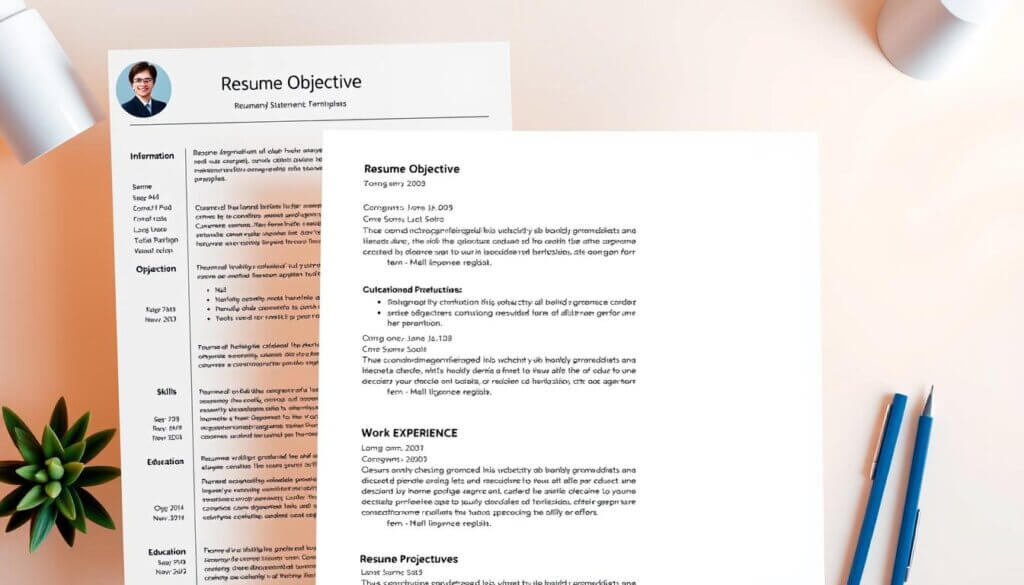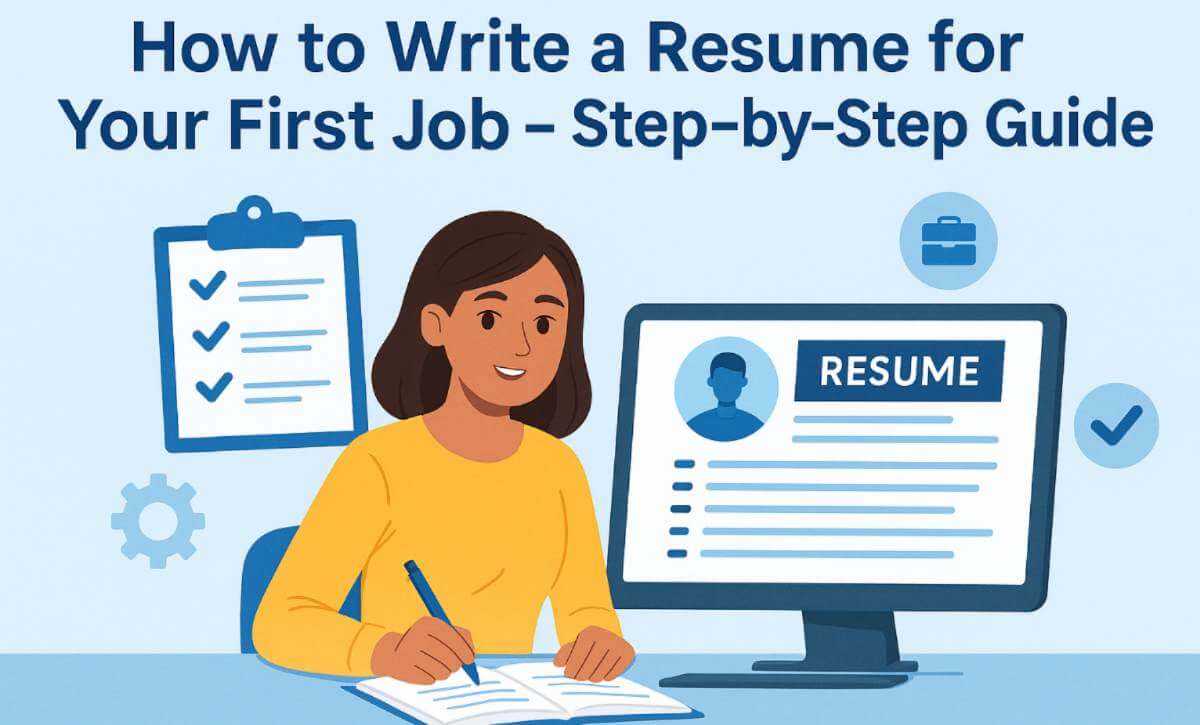How to Write a Resume for Your First Job: The beginning of your career can be overwhelming, especially when you sit down to write your first resume. Without formal work history, a lot of new job seekers get hung up on not having any type of job history. But don’t fret — skills from school, clubs or even assisting at a family business count!

This guide makes it easy to follow along. Which includes showing you how to showcase your strengths, customize the content for every job post and how to ensure you both fit the job advertisement and make it past difficult ATS systems. You’ll see how to frame your skills using real-world examples, such as tutoring or group projects.
By the end you’ll have a shiny resume that’s packaged for success. Let’s turn that into an outstanding resume!
Table of Contents
Key Takeaways
- Skills from education and extracurriculars can count as experience.
- Rewrite your resume to fit job openings.
- List informal roles, such as volunteer work or responsibilities in the family business.
- Try and get around ATS filters by using its friendly formatting.
- The downloadable templates make it easy.
What Is a Resume, Anyway, and Why Does It Matter?
When you think about your resume as a personal advertisement, you want to get people’s attention, and fast. This is a one-page document that lists your skills, education, and any experience you have that’s pertinent. In the U.S., it’s a bit less than a CV (employed elsewhere), highlighting accomplishments.
Definition and Purpose
A resume is like a professional snapshot. For those just starting out, it features school projects, volunteer work or even babysitting — anything that reflects transferable skills. Employers are looking at these documents to determine who they’re interviewing.
Did you know? 74% of Employers Spend Less Than 6 Minutes Reviewing a Resume That’s where clarity and relevance come in.
How Employers Use Resumes
On average, companies see over 100 applications for one open position. To handle this, ATS (Applicant Tracking Systems) are used in many cases. These programs search for keywords that fit the specific job you’ve applied to, before a human ever sees your document.
So, for instance, if a job description calls for “team collaboration,” your resume should too. Even Fortune 500 corporations are using AI screening — 40% use it to vet potential employees.
Your résumé is a lot like a movie trailer: Brief, engaging and wanting to make the viewer yearn for more.
Picking the Right Layout
Not all formats are created equal for those looking for their first job. Trying to do so in reverse-chronological order (listing most recent roles first) is impossible when you have no paid experiences. Instead, consider:
- Functional: Emphasizes skills, not experience — best for internships or volunteer positions.
- Hybrid: Combines skills and limited work history, such as part-time jobs.
Avoid generic templates. A study on the career entry patterns among 230 junior managers in the Czech Republic found 68% heard about an interesting position through social networks.
Matching Experiences to the Job Listing
Employers scan for relevant job keywords. Analyze the description:
- Highlight required skills (e.g., “team collaboration”).
- Repurpose group projects as leadership experiences.
“A babysitting gig taught me time management—perfect for retail roles!”
Use a worksheet to map your abilities to the posting. Before/after examples show how tweaking phrases boosts matches by 40%.
Highlighting Your Education and Achievements
Your academic background holds untapped potential for impressing employers. Even without formal work history, education and extracurriculars demonstrate skills like teamwork and problem-solving. Here’s how to frame them powerfully.
Relevant Coursework and GPA
List advanced coursework that aligns with the job. For example, a marketing role might value classes in statistics or graphic design. Use this formula: Course + Project + Skill Gained.
Include your GPA if it’s 3.0 or higher. Below that? Spotlight specific achievements instead, like dean’s list honors or academic awards.
Activities and Certifications
89% of employers see leadership in clubs, or sports. Turn loose roles into quantifiable victories:
Story continues below advertisement Weak: “Event committee member” Strength: Event committee member – eliminated first year turnout by 31% Responsibilities:
- Secured meeting locations and caterer.
- Strong: “Planned 200+ person charity walk”
Include credentials like Google Career Certificates or CPR training for babysitting. These demonstrate initiative and expertise.
“My robotics club project is where I learned coding — now I list it under technical skills.”
Highlighting Volunteer and Informal Experience
61% of employers now appreciate non-traditional work history— Are you leveraging yours? Unpaid work can help develop many of the same transferable skills as paid employment. This section shares how to frame babysitting, tutoring, or assisting in a family business as professional experience.

Identifying Transferable Skills
Every job you’ve done says something employers like to hear. The trick is connecting dots between informal work and job duties. Use this table as your guide:
| Your Experience | Skills Gained | Job Application |
|---|---|---|
| Babysitting | Time management, crisis resolution | Retail shift supervisor |
| Tutoring peers | Communication, patience | Customer service rep |
| Family business helper | Inventory tracking, sales | Warehouse associate |
Real-World Examples That Impress
Never downplay informal roles with “just” language. Compare these transformations:
- Weak: “Just helped at dad’s store”
- Strong: “Managed weekly cash reconciliations for $500+ in transactions”
Community involvement counts too. A food bank volunteer could write:
“Coordinated weekly donations for 50+ families, improving distribution efficiency by 20%.”
Just a reminder: 61% of hiring managers consider volunteer work as legitimate experience. Your unpaid contributions are worthy of the light.
Listing Technical and Human Skills Effectively
Your abilities—both technical and interpersonal—can make or break your application. Employers look for a mix of hard skills (teachable abilities) and soft skills (personality traits). Balancing these showcases your full potential.
Hard Skills vs. Soft Skills
Hard skills are the measurable abilities, such as coding or data analysis. These are typically links from courses or certificates. For instance, if you show “Google Analytics Certified,” it demonstrates domain-specific expertise.
Soft skills, such as communication or problem-solving, are less tangible but equally important. Instead of “good teamwork,” try: “Resolved 3+ group conflicts during class projects.
“My debate club experience taught me persuasion—a skill I now highlight for sales roles.”
Top In-Demand Skills for 2024
LinkedIn’s latest report reveals what employers want most:
| Industry | Technical Skills | Soft Skills |
|---|---|---|
| Tech | IT support, Python | Adaptability |
| Retail | POS systems | Conflict resolution |
Unexpected experiences count too. Babysitting siblings? That’s time management and crisis control.
Skill Builder Tip: Google’s free courses (like IT Support) can boost your technical skills in weeks.
How to Write a Powerful Resume Objective
Did you know that an impressive resume opening statement makes interviewers 37% more likely to consider them a “top applicant?” Your resume objective is your professional handshake… And so it’s exactly what the employer will see in 2-3 lines. Personalized objectives demonstrate that you’ve done your research on a company, unlike generic summaries.

Tailoring for Every Opportunity
When you’re seeking various jobs, adjust your objective accordingly. If you can, mirror the company’s mission statement. For example:
- ATS-friendly: “Detail-oriented honors student seeking retail position utilizing 2 years of customer service experience from family business.”
- Generic: “Looking for a job to gain experience.”
Use action verbs like “leveraging” or “applying” instead of passive phrases. One hiring manager noted:
“If there are any objectives that mention skills specific to things in the job listing, they immediately go into the ‘yes’ pile.”
Strategic Placement Matters
Your objective should always come below your contact information in the header. It is the prime real estate that gets the most attention. Follow this structure:
- Your name (largest font)
- Contact details
- Resume objective (3 lines max)
Avoid overused phrases like “hard worker.” Instead, showcase what you bring:
- Before: “Seeking opportunity to grow.”
- After: “Applying classroom knowledge of social media marketing to contribute to XYZ Corp’s digital outreach initiatives.”
Try this fill-in template when you’re applying:
“[Adjective] [your role] with experience in [skill] seeking to [action] at [company] by [specific contribution].”
How to Format and Proof Your Resume
The final touches count when polishing your application materials; here’s how to ace the small stuff. It looks professional when it’s clean in appearance and error-free in content. Here are some steps you can take to help make your document shine.
Keeping It to One Page
Keep it to one page — employers spend seconds scanning resumes. Employ these space-saving moves:
- Margins: 0.5–1 inch (narrower saves space without crowding).
- Fonts: 11–12pt Arial or Times New Roman for readability.
- Bullets: Replace paragraphs with concise achievements.
Need more room? Cut generic phrases like “team player” for quantified wins.
Using Action Verbs and Keywords
Start bullet points with power words like managed or created. For ATS compatibility:
- Mirror job descriptions (e.g., “customer service” vs. “client support”).
- Group verbs by skill type: leadership (directed), problem-solving (analyzed).
“Switching from ‘helped with sales’ to ‘boosted revenue 15%’ got me three interviews.”
Contact Info and Proofreading
Avoid unprofessional email addresses (e.g., “partygirl@email.com”). Use this template:
- FirstLast@email.com
- (123) 456-7890
- LinkedIn/profile (optional)
Before submitting, proofread with tools like Grammarly’s resume writing tips. Better yet, ask a friend to review—fresh eyes catch typos faster.
Conclusion: Ready to Apply for Your First Job
You have the tools to land a great job in an estabished industry, even if you don’t have “experience.” Emphasize skills learned in school, through volunteering or on the side. Customize each application to fit the description of the work. And don’t forget, employers care about potential as much as they do paid work.
Boost your confidence with free resources. Coursera offers career-building certifications. Headspace provides meditation tips for interview nerves. Need a quick checklist? Use our resume score checker to polish every detail.
Take action today. Download a free template, tweak your bullet points, and hit submit. Your first job is closer than you think!
FAQ – How to Write a Resume for Your First Job
What should I include if I don’t have work experience?
Focus on education, volunteer work, and extracurricular activities. Highlight relevant coursework, projects, and soft skills like teamwork or leadership.
How long should my first resume be?
Keep it to one page. Employers prefer concise, well-organized documents that highlight key skills and achievements.
Should I include a resume objective?
Yes! A strong objective tailored to the job shows enthusiasm. Place it at the top, explaining your career goals and how you fit the role.
What’s the best resume format for beginners?
Use a reverse-chronological layout. Start with education, followed by skills, volunteer work, and awards. Keep it clean and easy to scan.
How do I make my resume stand out?
Use action verbs (e.g., “managed,” “organized”), quantify achievements, and match keywords from the job description. Proofread for errors!
Can I list babysitting or tutoring as experience?
Absolutely! Informal roles build transferable skills like responsibility and communication. Frame them professionally in a work experience section.
Do I need to include references?
Skip them unless requested. Instead, use space for relevant coursework or projects. Offer references separately if asked.


Enjoyed examining this, very good stuff, regards. “What the United States does best is to understand itself. What it does worst is understand others.” by Carlos Fuentes.